
ac6000cw
-
Posts
675 -
Joined
-
Last visited
Content Type
Profiles
Forums
Articles
Posts posted by ac6000cw
-
-
8 hours ago, eatstoomuchjam said:
That or the G9 II - it seems to be not much bigger (a little taller and the hand grip + EVF protrude just a little more) and it barely costs more used.
The G9 ii is much larger and over 50% heavier than an OM-5:
The obvious M43 alternative (larger and heavier, but not as bad as the G9 ii) is a used OM-1 - almost a steal at it's current sub-£1000 used prices in the UK for what you get in a rugged, weather-sealed, reasonably compact body.
And of course as MrSMW said, there's the S9 at sub-£1000 new, but that's not weather-sealed nor has an EVF.
It's the lack of a compact M43 body with PDAF, 4k50/4k60 and excellent video IBIS that drove me to buy an S9 - my first ever non-M43 MILC (after 13 years of buying M43 cameras and owning a sizeable lens M43 collection).
That said, the E-M5iii/OM-5/OM-5ii series aren't really aimed at the video-user market - they are primarily lightweight, small, weather-sealed stills-orientated cameras with a bit of retro style (which is an OM-System self-confessed niche, really).
-
18 hours ago, Sebastien said:
But how do you achieve that, provided it is a 4/3 lens without an aperture ring (like my olympus 17 & 45 mm 1.8 and the 12-32 kit lens)?
As 'newfoundmass' suggested, use the touch screen, or (probably, for movie mode, as the manual doesn't make it clear if it applies to movies as well as stills) you can use/customise the functions of the front and rear dials:
-
Something that's worth noting/remembering is that the 'Flkr Decrease' setting can be used to fix the shutter speed to 1/50, 1/60, 1/100 or 1/120 (180 degree shutter for 24/25, 30, 50 or 60 fps video) when you press the video record button in stills/photo mode (which forces the camera into 'P' mode, irrespective of what the stills/photo setting is). This workaround gives you shutter priority video with auto aperture and, if you want, auto-iso - it's 'photo' P mode with fixed shutter speed, basically.
I find this really useful for 'instant hybrid' shooting - press the shutter button to take stills (in whatever mode you have set) or press the video record button to shoot shutter-priority video - no need to move the mode dial.
From the manual:

- Sebastien and John Matthews
-
 1
1
-
 1
1
-
2 hours ago, MrSMW said:
What is this camera?!
Never seen it before…
Have a read of https://www.dpreview.com/articles/0518873678/hasselblad-lunar-an-act-of-lunacy
It looks like it's a (rare, only 100 made) Hasselblad Lusso, based on the Sony A7R.
-
35 minutes ago, MrSMW said:
The Euro deal is significantly better!
€1299 is 'only' about £1100.
Good point 🙂(it did go lower than £1299 recently from a some sellers - see the red line below).

...and for the S9 + 18-40 kit over the same period - https://www.camerapricebuster.co.uk/Panasonic/Panasonic-Lumix-S-Cameras/Panasonic-Lumix-S9-Camera-with-18-40mm-Lens:

-
15 hours ago, John Matthews said:
I'm seeing deals in Germany and France for a S5D + 28-200 for 1299 euros- that's a great deal!
It's similar in the UK (£1299).
Personally I think Panasonic should offer the S9 + 28-200 as a reasonably compact FF travel cam kit (e.g. like Sony have the APS-C A6700 + 18-135mm kit).
-
9 hours ago, Andrew Reid said:
The best one out of all those is the 28-200mm.
It's been on my wish list for a while...
(I already own the 18-40 and 20-60, and I'm more likely to buy the more-compact APS-C Sigma 18-50mm F2.8 than the Pana 24-60).
-
Re. S9 lens options (and being a 'zoom' rather than 'prime' person), now the 24-60 F2.8 is out, the obvious hole in Panasonic's full-frame small/light zoom range is a longer focal length companion to the 18-40 collapsible zoom e.g. a compact 35-90. (Like the 12-32 plus 35-100 pair they introduced to go with the smaller M43 cameras years ago).
The current 'reasonably compact' FF zoom range mounted on the S9 (from the left, 18-40, 20-60, 28-200 and 24-60):
-
2 hours ago, Video Hummus said:
It involves their partner and I'm not talking about Leica. RED going down market and Sony's success with VENICE has stirred up some unlikely partnership collabs.
Arri?
-
I don't have a definitive answer, so this is an 'engineering opinion':
For UHD (3840 x 2160) the G7 crops a slightly larger area out of the centre of the sensor, around 4100 pixels horizontally. Someone on Reddit estimated it to be 4130 x 2323 - see https://www.reddit.com/r/PanasonicG7/comments/3zfu0f/comment/cym5c9j/ - which is very close to 4096 x 2320 (and both dimensions of that are divisible by 16).
If you take 4096 x 2320 and multiply each dimension by 15/16 you get 3840 x 2175, and I suspect because of the low scaling ratio it's most likely using 'nearest neighbour' re-sampling (line-skipping in camera speak) to generate UHD from it.
So my educated guess is that its reading out a 4096 x 2320 region of the sensor, de-bayering it and then using line-skipping to down-sample it to 3840 x 2160.
-
-
-
3 hours ago, maxJ4380 said:
I have noticed that the e-m1 breaks long shoots up into segments, roughly 3 gig sized files.
Yes, and there's also a limit of 13 segments (only 5 in some of the older cameras). The segment size limit is nominally 4 GB, but because it uses variable bitrate (VBR) encoding the camera seems to assume the maximum bitrate when deciding how to split the files - hence they usually come out smaller than 4 GB.
-
-
Panasonic is obviously trying to appeal to the more retro/classic/stylish area of the market, like it has in the past with silver/grey and black versions of some M43 cameras. Certainly looks more stylish than the plain black version (my S9 is a black and red version, which is more at the 'fun' end of the market).
-
2 hours ago, maxJ4380 said:
is it still a locked down shot if you pan or tilt while on a tripod or is it called a different type of shot ?
I don't know the 'industry definition' of it, but I would think a 'locked down' or 'locked off' shot is just that - the camera can't/doesn't move at all. If you pan a camera, it's a 'panning' shot (tilting is just panning it vertically instead of horizontally, so I guess comes under the same name).
- John Matthews and MrSMW
-
 1
1
-
 1
1
-
On 5/25/2025 at 10:41 AM, John Matthews said:
Concerning the moiré, I really thought my G7 would resist moiré more than my G100 or GX80 or even my S5, S5ii right now, but sadly, even with its OLPF, it doesn't- just blurrier moiré maybe. 🙂 I never saw moiré on the GH6 though. I'm sure it does, but I think the pixel density is such that it handles it very well, maybe out-resolving most lenses and therefore making the lens an OLPF.
AFAIK, up to at least 60p, the GH5/GH5ii/GH5s/G9/GH6/GH7/G9ii read out the whole sensor width and sufficient height to allow high-quality re-sampling/processing down to (e.g.) FHD and UHD, which probably helps with moire suppression. And yes, the high pixel density versus lens resolution also helps (plus diffraction softening at smaller apertures).
On 5/25/2025 at 10:41 AM, John Matthews said:What I like about the G7 is the fact it has a chunky-ish grip. I don't think I've ever had a camera so easy to hold at only 410g.
I like reasonably chunky grips too - it's a major reason why I've never bought an E-M5 iii or OM-5 (and bought used E-M1 ii and iii instead, despite the larger size and weight).
I've got a Sirui grip for the S9 (which is deeper than the SmallRig version), but if I've got the 20-60mm kit lens on it I don't add the grip as there's enough lens barrel to sit nicely in my left hand. The grip is useful with the 18-40mm lens though.
-
-
I skipped over the G7 and went from G5 to G6 to G80, but I shot some of my favourite footage with the G6 in Standard profile at 1080p50 (28Mbps AVC) - the highest quality it could shoot. There was definitely something about the image that those older 16MP sensor cameras had, which seemed to have got lost in the G80 (despite it having nominally the same 16MP sensor). But eventually I decided I could live with the size and weight of a G9 and entered a whole better world of image quality and stabilisation performance...
Comparing the G9 and my recently acquired S9 - I think 4k50p on the G9 is much less prone to aliasing/moire and the sharpening isn't overdone, but the stabilisation is better on the S9 (as is the dynamic range handling in difficult conditions). Otherwise, which one I might choose to take out would depend far more on lens choices and overall kit size/weight for what I was intending to do - either can produce excellent video (my abilities are more the limiting factor!).
(Straying away from Panasonic, if I was forced to choose just one camera to keep and use out of my current collection, it might be the OM-1, but only because it has a blend of abilities that fit my preferences and needs combined with 'good enough' video quality).
-
19 hours ago, ND64 said:
A few interesting quotes from the BCN web page where the chart orrginates from (my bold):
QuoteAs of April, full-frame mirrorless cameras account for 5.5% of the total camera market in terms of sales volume and 21.4% in terms of sales value. Among mirrorless cameras, which account for more than 90% of interchangeable lens cameras, full-frame mirrorless cameras account for 19.4% in terms of units and 33.4% in terms of value. The full-frame mirrorless market is characterized by the fact that the number of units is moderate but the value composition ratio is significantly higher due to the high unit price. Sales of integrated lens cameras are doing well due to the growing momentum of reconsidering compact cameras. However, interchangeable lens cameras are not growing. The biggest impact was the price increase implemented by Sony in August last year. In June and July before the price increase, there was a rush to buy. Purchases were concentrated especially around the α7C II. The year-on-year sales volume of full-frame mirrorless cameras as a whole was also greatly boosted. However, the situation suddenly slowed down in August. Since September, full-frame mirrorless sales have been significantly lower than the previous year.
QuoteNikon's ability to capture the top market share is due in large part to these "opponents' mistakes." The average unit price of full-frame mirrorless cameras was becoming routinely over 300,000 yen. For the average user, this was a price range that was difficult to reach. Nikon's pricing strategy, which has managed to keep prices at that level and aim to get people to switch from smartphones to cameras, has so far been successful.
Nikon is basically going for a 'pile it high and sell it cheap' strategy in the full-frame MILCs - but as the last to enter that market, they probably don't have much choice when up against Canon and Sony (Panasonic is almost a niche player but could easily suffer collateral damage from the battle).
-
15 hours ago, eatstoomuchjam said:
I could be wrong, though - to use this forum as a sample group, is anybody here, at this time, still waiting to buy any current Sony mirrorless camera brand new?
Not me, but that's mostly because every time, over the years, I've considered buying one of their MILCs the cons have outweighed the pros (for my use cases).
So I've stayed completely with M43 cameras (mostly Panasonic) until very recently, when I bought an S9 as a smaller and lighter 'general use' alternative to my OM-1 and G9. I seriously considered an A6700 instead, partly because it has an EVF, but the better IBIS/stabilization of the S9 (and its recent heavy price reduction in the UK) swung it that way eventually.
I'm a 50fps shooter normally (not for slo-mo, to get less compromised motion handling), so I regard the S9 as basically an APS-C video camera, hence comparing it to the A6700. Fuji are ruled out for me as they don't support plug-in power for external mics, and AFAIK Canon and Nikon don't currently have anything in that size/shape with IBIS.
But I'm probably an outlier here, as I'm a 'video' person through and through, rather than a 'film' person 🙂.
-
7 hours ago, eatstoomuchjam said:
But is it 3328x2496 ready from the full sensor?
I think it's derived from the full sensor area.
But I don't think it's really comparable with the S1 ii no-crop 5088 x 3392 3:2 at 60p.
Neither of them can manage the full sensor resolution (S1ii 6000x4000, GH5 5184 x 3888) at 60p.
-
24 minutes ago, ita149 said:
Yes, the 2017 GH5 also has 60fps open gate
Are you sure about that - the manuals for the GH5 and GH5ii don't mention it, 4:3 '6K-A' is only available up to 29.97 fps?
If you want 59.94 fps 4:3 then it's 3328 x 2496 maximum.

-
8 hours ago, Andrew Reid said:
£800 off.
Which makes it £999 with the 20-60mm kit lens.
The body only is down to as little as £750 open box mint used.
Down from the RRP of a few months ago £1600.
One can only assume they are having massive problems shifting them.
Which is a pity because the S9 is a fun little beast.
The first stage of large S9 price drops in the UK started in February - I bought an S9 as soon as it happened, as I'd been interested in getting one for a while. In my case it was a red S9 + 18-40mm kit for around £1100 in 'like new' condition. With further price drops about a month ago that kit is now about £1200 new.
I quite like it - nice solid-feeling body, decent battery life and with the 18-40mm a fairly compact kit (for a full-frame camera). Not quite a modern GX80, but close enough for most of my use cases.
My main criticism is probably that, for a camera presumably aimed at new/inexperienced users, there's too much of the higher-end video stuff cluttering up the menus with options and choices they probably won't understand or ever use. Sure, you can use filtering, My List, customise the 'quick' menu and set up custom mode dial presets to simplify things - but you've got to understand what the options mean in order to set those up.... Why not split the video bitrate/fps/frame size/codec options into 'basic' and 'advanced' sets out-of-the box? And when you press the 'record' button in photo mode, default it to shutter priority with 180 degree shutter angle, instead of 'P' mode with variable shutter speed/angle (but that is a historical Panasonic issue/feature going back many years - at least the 'flicker decrease' workaround for it is still in the menus).

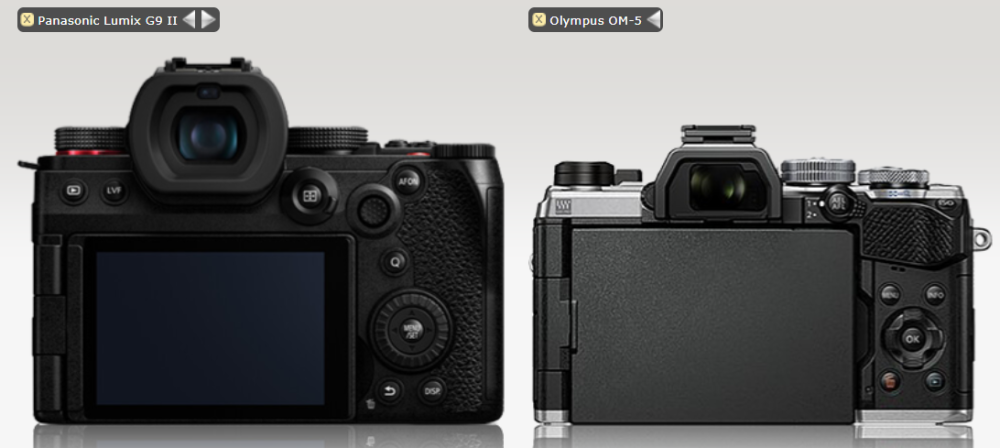
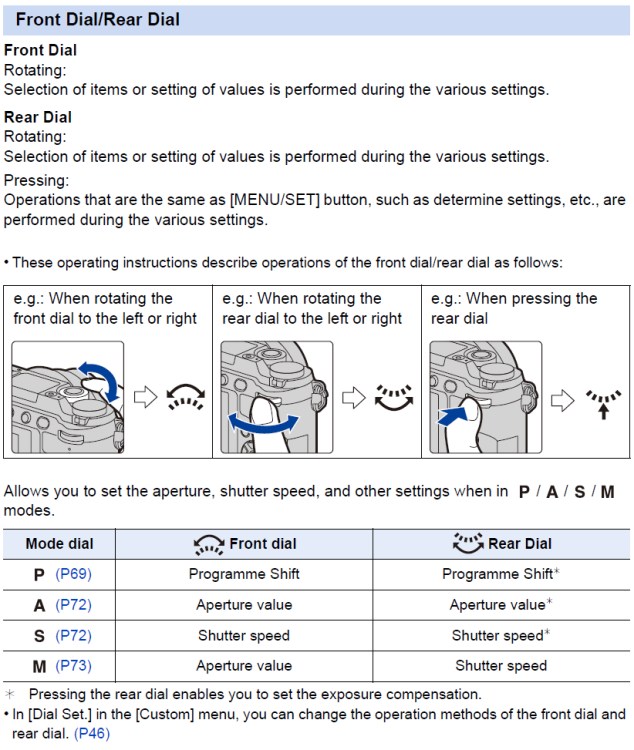
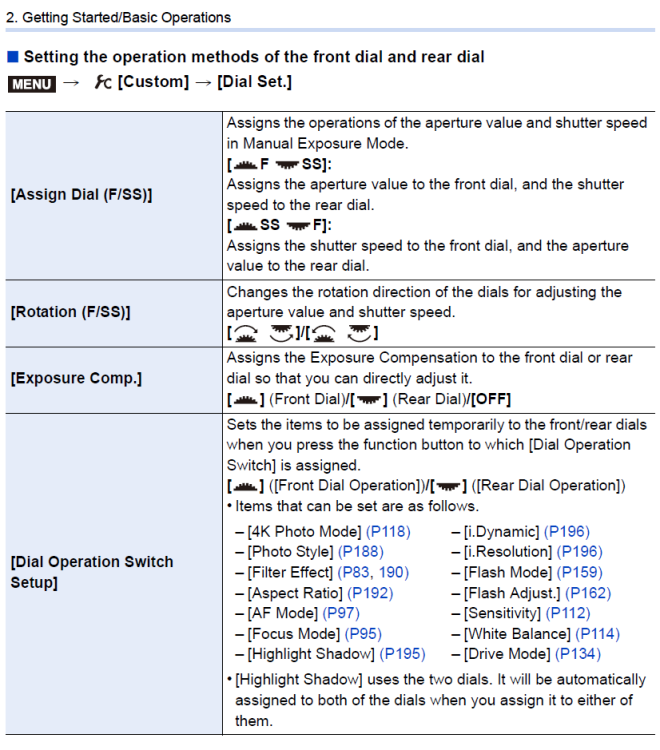

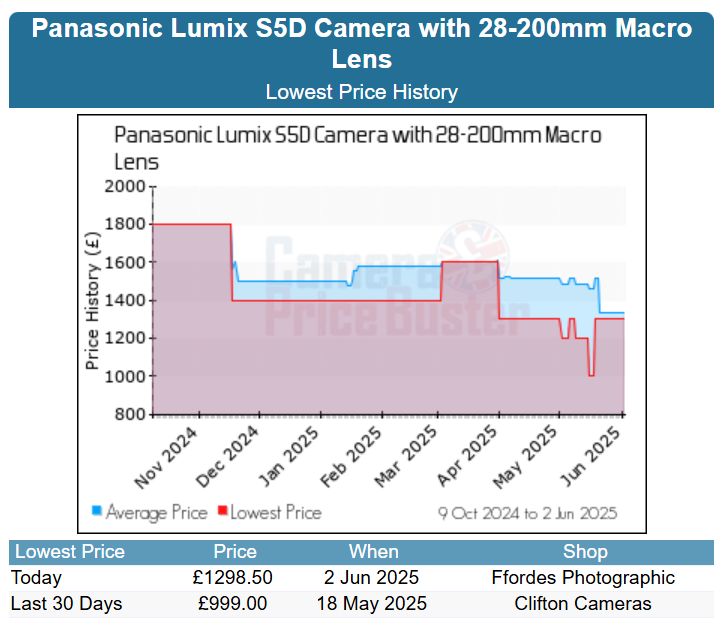
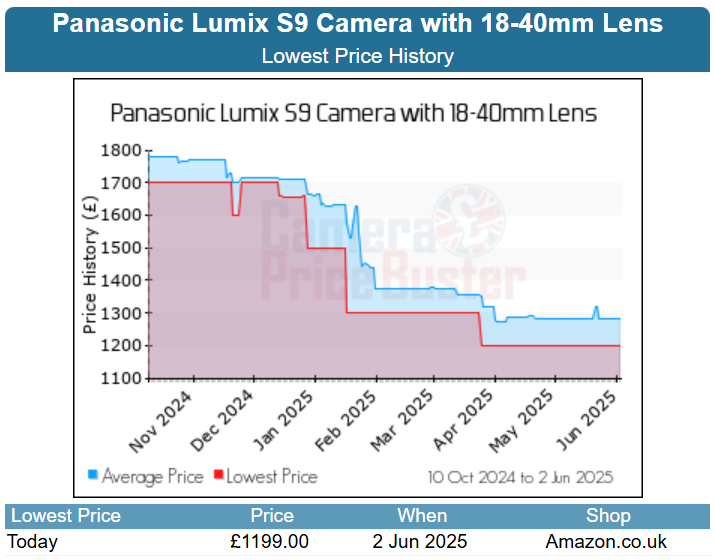

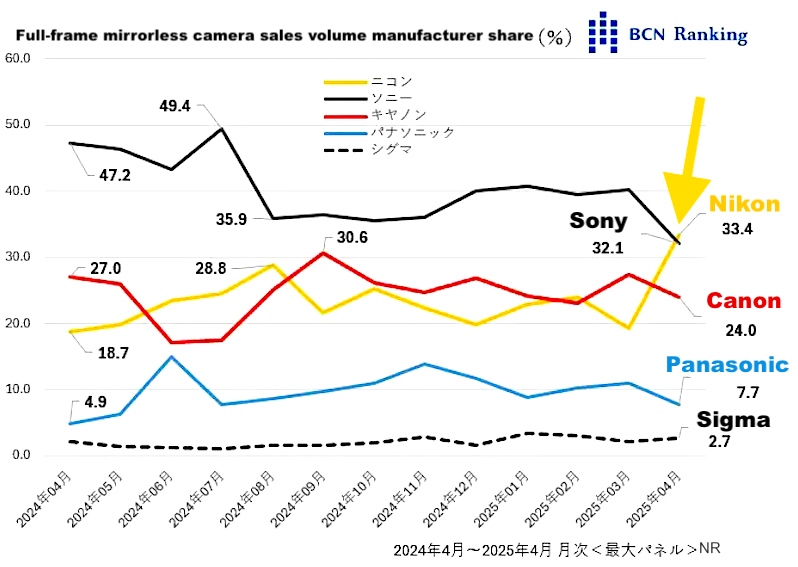
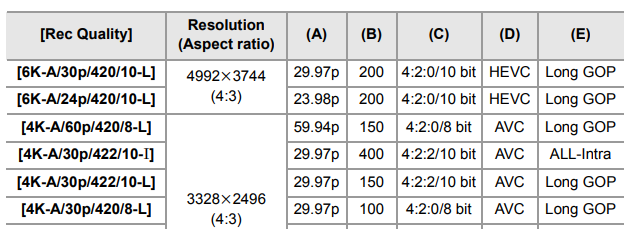
New travel film-making setup and pipeline - I feel like the tech has finally come of age
In: Cameras
Posted
I own and use both. The Oly 12-100mm F4 is a great lens, but it's much bigger and heavier than the Pana 14-140mm (560g versus 265g) - both on an OM-1:
On an E-M1 ii/iii or OM-1 the 12-100mm supports Sync-IS which gives sublime video IS performance, but even with the relatively light (for that kind of camera) OM-1, the combo is 1.2 kg and somewhat front-heavy if you're using it handheld. A GH7 + 12-100mm would be nearly 1.4 kg.
As a 'travel' lens, IMHO the combination of low weight and focal length range makes the 14-140mm almost perfect (other than in really low light, of course).